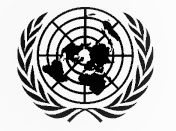Improvised explosive devices (IED) remain a multi-faceted, cross-cutting threat to peace, security and sustainable development. Increasing urbanization of conflict and new developments in the design and detonation of IEDs pose additional challenges to countering this multi-dimensional threat. IEDs continue to harm civilians, including United Nations personnel, disrupt the provision of humanitarian assistance, and impede the achievement of the Sustainable Development Goals. The use of IEDs in conflict, especially by non-state armed groups, has become common practice. IEDs are now a leading cause of death and injuries in the context of armed conflict.
Conventional ammunition is frequently used as a main charge in improvised explosive devices. As such, implementing the Global Framework for Through-life Conventional Ammunition Management is a key component of stemming access to material used for IEDs. Visit our ammunition webpage for more information.
Various legal instruments address specific aspects of IEDs, inter alia, the Convention on Prohibitions and or Restrictions of Certain Conventional Weapons (CCW) (Amended Protocol II on the Use of Mines, Booby-Traps and Other Devices and Protocol V on Explosive Remnants of War in connection with unexploded ordnance and abandoned ordnance), the Convention on the Marking of Plastic Explosives for the Purpose of Detection and the Anti-Personnel Mine Ban Convention (Ottawa Convention)
IED production takes place outside government controls. Therefore, a traditional arms regulation approach — regulating governmental production, trade, and use of this weapon through a multilateral agreement — may not yield results. Instead, the focus has been on the capacity of governments to effectively bring together several policy strands for comprehensive national action—from commercial mining, inner-city development, violent extremism, and military stockpile management, to agriculture and aviation security.
The General Assembly first adopted a resolution on “Countering the threat posed by improvised explosive devices” in 2015 (A/RES/70/46). In view of the devastating impact of IEDs, a consensus resolution in the First Committee was pursued with particular emphasis on the need for coordination and international cooperation and assistance.
Through this resolution (A/RES/71/72), the United Nations Office for Disarmament Affairs was requested to establish, where feasible and in coordination with other relevant entities, an online hub providing impartial, authoritative information relevant to addressing the issue of IEDs in a comprehensive manner, thus facilitating access to existing initiatives, policies and tools presenting good practices, inside and outside the United Nations system, filling gaps where needed but avoiding duplication.
This webpage is intended to serve this purpose.
Reports of the Secretary-General
Views of Member States pursuant to General Assembly resolution “Countering the Threat posed by Improvised Explosive Devices”
Information hub to address the issue of improvised explosive devices
Political and legal instruments
- Anti-Personnel Mine Ban Convention (APMBC)
- Convention on Certain Conventional Weapons (CCW)
- Arms Trade Treaty
- Firearms Protocol
- EWIPA Political Declaration
- Global Framework for Through-life Conventional Ammunition Management
- Programme of Action on Small Arms and Light Weapons and its International Tracing Instrument
Standards, guidelines and guidance documents
- IED Lexicon
- Compilation of existing guidelines, best practices, and other recommendations
- International Ammunition Technical Guidelines (IATG)
- International Mine Action Standards (IMAS)
- Technical Guidelines to Facilitate the Implementation of Security Council Resolution 2370 (2017)
- GICHD IED Clearance Good Practice Guide
- GICHD IED Indicators and Ground Sign Awareness Handbook
- United Nations Improvised Explosive Device Disposal Standards
- United Nations Peacekeeping Guidance
- United Nations Peacekeeping Missions Improvised Explosive Device Threat Mitigation Handbook
- United Nations Peacekeeping Missions Military Engineer Unit and Counter Explosive Threat Search and Detect Manual
- United Nations Peacekeeping Missions Military Explosive Ordnance Disposal Unit Manual
- United Nations Peacekeeping Missions Military Infantry Unit Manual
- Guidelines on Improvised Explosive Device Threat Mitigation in Mission Settings
- UNMAS: Landmines, Explosive Remnants of War and IED Safety Handbook
Research and studies
- UNIDIR: Addressing Improvised Explosive Devices: Options and Opportunities to Better Utilize UN Processes and Actors
- UNIDIR: Examining the Roles, Responsibilities and Potential Contributions of Private Sector Industry Actors in Stemming the Flow of IEDs and Related Materials
- EAPCCO CTCoE: The Manifestation and Threat of Improvised Explosive Devices in Eastern Africa
- GICHD: An Initial Study Into Mine Action and Improvised Explosive Devices
- AOAV Key Reports on IEDs
- Conflict Armament Research
- Small Arms Survey: The Trafficking of Improvised Explosive Device Components and Commercial Explosives in West Africa
- Conflict Armament Research: Stopping at Source – Countering Access to Materials Used in IEDs
Initiatives
- UNMAS IED Threat Mitigation
- EU-UN Global Terrorism Threats Facility
- INTERPOL Chemical and Explosives Terrorism Prevention Programme
- WCO Programme Global Shield
- Landmine and Cluster Munition Monitor
- Small Arms Survey: Pathway to a Regional C-IED Strategy in West Africa
- Regional Conference on Addressing the Humanitarian Impact of Improvised Anti-Personnel Mines
- ECOWAS Regional Conference on Countering IEDs in West Africa

